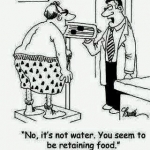seattlepap wrote: ↑Thu Apr 11, 2019 2:22 pm
Pointing out that anything over an AHI of 5 is still abnormal and that their treatment isn't working and that they should see their doctor is absolutely helpful advice.
A lot of the people who come here have doctors who only look at compliance. And many that actually look at the ahi think that an ahi of 3 or 4 is great (because it is below 5).
So, while it is very true to state that the ahi of 5 means their treatment isn't working, telling them to go see the doctor probably won't help them much. It would be much better to have them post data and then we can give them REAL advice that will help them.
Most of the doctors really don't know how to use a cpap machine. They may know how to set it, or they rely on the DME to set it. But they don't know what to do to improve somebody's comfort. Many have no idea that starting at 4 is really uncomfortable for most people and actually causes many people to quit. They don't know that an auto machine set at 4-20 isn't going to magically find the right setting and stay where it needs to. Most people who fail at cpap fail because they were sent home with a machine that was not set properly and the doctor didn't care or know how to fix it.
That is why we have this forum. We have been there, done that. We know how to help somebody improve their comfort, find the ideal settings, fit the mask better, etc. We can give real help that will help a person succeed.
We also know that an ahi of 3 or 4 is still not good. We know that there is more to sleep quality that ahi. There could be really long events, clusters of events, light sleeping due to pressure changes or leaks, and other issues. Most doctors looks at ahi and compliance. They really aren't much help in the real world of sleeping with a cpap machine.
Who would have thought it would be this challenging to sleep and breathe at the same time?









